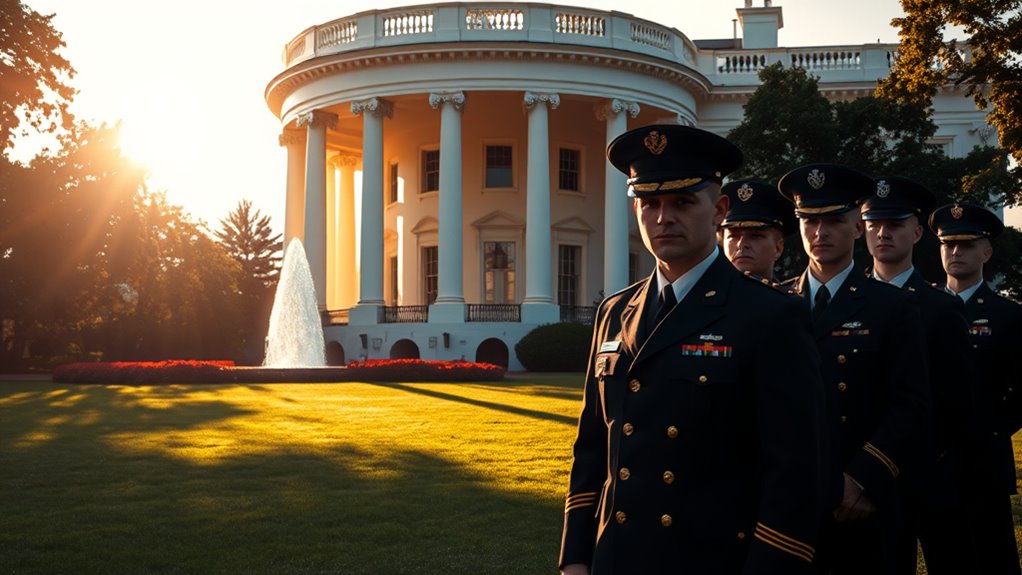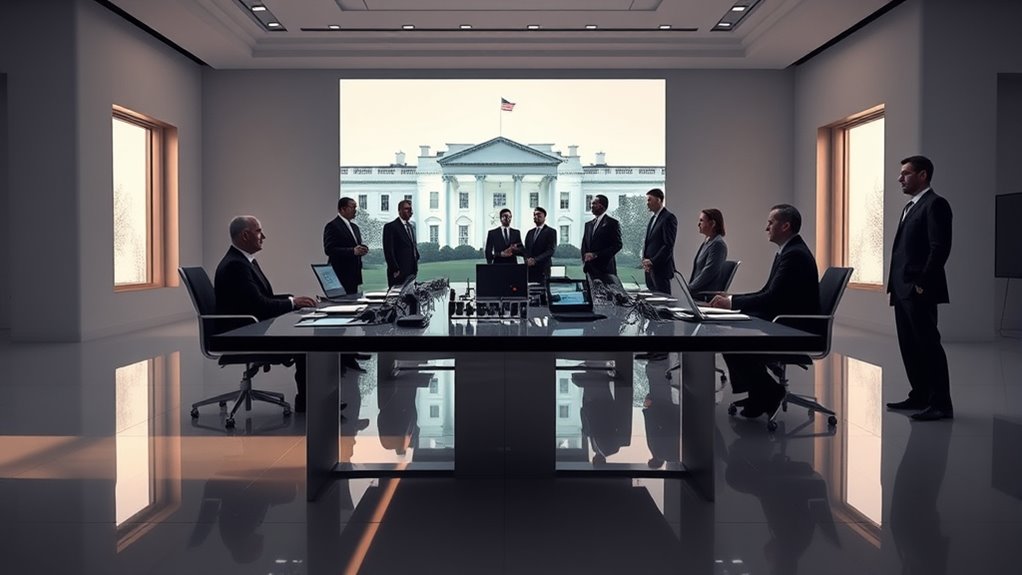The White House's surprising move to hand background checks for top officials from the FBI to the Pentagon is aimed at streamlining the vetting process using AI. This shift enables the Pentagon to enhance security while allowing the FBI to focus on its core duties. They promise a more efficient clearance process, prioritizing data organization and real-time threat assessment. Curious about the implications of this bold transition? Discover more about how this affects national security and personnel vetting.

In a significant shift, the White House has decided to transfer the responsibility of conducting background checks for top officials from the FBI to the Pentagon, citing concerns over the intrusiveness of the FBI's vetting process. This move comes as the administration seeks to streamline security clearance procedures while addressing worries about how thorough the FBI's evaluations have become.
By assigning this task to the Pentagon, the White House aims to allow the FBI to refocus on its core responsibilities, enhancing public trust and maintaining law and order. The Pentagon now responsible for conducting background checks involves implementing stringent security measures to ensure that top staff meet necessary clearance standards. Central to this process is the use of artificial intelligence (AI), which helps organize and prioritize data during security clearance investigations. Recent developments in AI technology highlight the importance of robust safety measures to ensure accuracy and integrity in these evaluations.
While AI's capabilities are impressive, it's crucial to note that the Pentagon isn't using generative models like ChatGPT. Instead, the focus is on creating real-time risk heatmaps that identify potential security threats, streamlining the overall vetting process.
You'll find that the Pentagon's approach emphasizes transparency and accountability, particularly through the Defense Counterintelligence and Security Agency (DCSA). However, as with any technology, there are concerns regarding biases in AI algorithms and the protection of individuals' privacy.
To mitigate these risks, oversight from the White House and Congress will be essential, ensuring that the AI systems operate within a framework that prioritizes fairness.
The security clearance process remains comprehensive, involving thorough reviews of financial records, past employment, and interviews that assess individual suitability. By transferring this responsibility, the Pentagon not only inherits the task but also the expectation of maintaining high security standards for top staff.
There's a prevailing sense of confidence in the Pentagon's ability to handle these clearance needs effectively, which is crucial for national security.
In essence, this change is more than just a procedural adjustment; it reflects a broader intention to enhance efficiency while addressing concerns about the previous vetting process's intrusiveness.
As the Pentagon steps into this new role, the hope is that the integration of AI will streamline background checks without compromising security. This transition marks a notable pivot in how the government approaches personnel vetting, aiming for a balance between thoroughness and efficiency that can adapt to the challenges of a rapidly changing security landscape.
Conclusion
In this surprising turn of events, the White House's choice to hand over AI-vetting power to the Pentagon feels like switching the captain of a ship mid-voyage. It raises questions about trust and security in an ever-evolving landscape. As the tides of technology shift, you must wonder: will this new path steer the nation toward safer shores or into uncharted waters? Only time will tell if this bold maneuver truly fortifies the crew or leaves them adrift.









